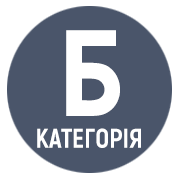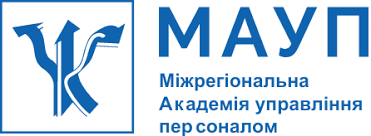CURRENT THREATS AND PROTECTION STRATEGIES FOR VISUAL CONTENT IN INTERACTIVE IT PROJECT SYSTEMS
DOI:
https://doi.org/10.32689/maup.it.2025.1.4Keywords:
protection methods, neural networks, adversarial attacks, digital content protection, digital contentAbstract
In the context of rapid digitalization and the accelerated development of artificial intelligence technologies, protecting visual content has become increasingly important. The growing threats of forgery, theft, and unauthorized use of digital images necessitate the improvement of security methods and the development of innovative strategies to counter violations of intellectual property rights. Purpose of the study. The aim of this work is to analyze modern methods of protecting visual content in interactive IT projects, taking into account the rapid development of digital technologies, the increasing risks of digital content forgery, the imperfections of intellectual property regulations, and the influence of artificial intelligence. Methodology. The study employs a comparative analysis of existing digital content protection techniques, including encryption, watermarking, access restrictions, metadata application, and neural network–based approaches. It also examines adversarial attack methods, particularly the Nightshade technology. Special attention is paid to the integration of user interface–level protections and technical restrictions in web environments, ensuring a comprehensive approach to the security of multimedia data. Scientific novelty. The scientific novelty lies in the comprehensive consideration of advanced technologies for protecting visual content from automated collection and use by artificial intelligence systems. The study highlights the critical role of metadata in verifying the authenticity of digital images and suggests modern practices for applying neural networks to detect visual content manipulations, taking into account current cybersecurity challenges. Conclusions. The article emphasizes the importance of multi-level protection of digital content by combining various approaches – from encryption and watermarking to neural network technologies and specialized adversarial methods. It has been found that an effective strategy must encompass both technical and organizational security measures, ensuring flexibility of security systems amid the ever-growing digital threats. Future research directions are defined in the development of new protection algorithms, their integration into IT products, and the optimization of existing methods to enhance resilience to modern challenges.
References
Колодінська Я. О., Скляренко О. В., Ніколаєвський О. Ю. Практичні аспекти розробки інноваційних бізнес-ідей з використанням цифрових сервісів. Економіка і управління. 2022. № 4. С. 53–60. DOI: https://doi.org/10.36919/2312-7812.4.2022.53.
Kumar S. A review on attacks and defense strategies in generative AI models. Artificial Intelligence Review. 2023. DOI: 10.1007/s10462-023-10450-2.
Liu S., Pan Z., Song H. An improved image watermarking method based on DCT and fractal coding. Signal Processing: Image Communication. 2021. Vol. 94. P. 116205.
Begum M., Uddin M.S. Digital image watermarking techniques: A review. Information. 2020. Vol. 11. No. 2. P. 110.
Eldaoushy A. F., Desouky M. I., El-Dolil S. A., El-Fishawy A. S., Abd El-Samie F. E. Efficient hybrid digital image watermarking. Journal of Optics. 2023. Vol. 52. No. 11. P. 2224–2238.
Epic Games. Unreal Engine 5 Documentation: Pak File Encryption. 2022. URL: https://docs.unrealengine.com/5.0/en-US/encrypting-pak-files-in-unreal-engine (дата звернення: 25.04.2025).
Goodfellow I. J., Shlens J., Szegedy C. Explaining and harnessing adversarial examples. Proceedings from ICLR 2015: International Conference on Learning Representations. 2015. URL: https://arxiv.org/abs/1412.6572 (дата звернення: 25.04.2025).
Figma Inc. Security at Figma. 2023. URL: https://www.figma.com/security (дата звернення: 25.04.2025).
Zhao B., Yang J., Li Y., et al. Nightshade: Poisoning data to prevent unauthorized training on generative models. Proc. of the ACM Conf. on Computer and Communications Security (CCS ‘23). 2023. URL: https://nightshade.cs.uchicago.edu (дата звернення: 25.04.2025).
Robust watermarking of medical images using DICOM standards. Scientific Reports. 2021. Vol. 11. Article 11820. DOI: https://doi.org/10.1038/s41598-021-91035-z.
El-Hajj M., Fadlallah A., Chamoun M., Serhrouchni A., et al. Secure and lightweight image encryption technique for IoT applications. IEEE Access. 2020. Vol. 8. P. 186958–186973.





